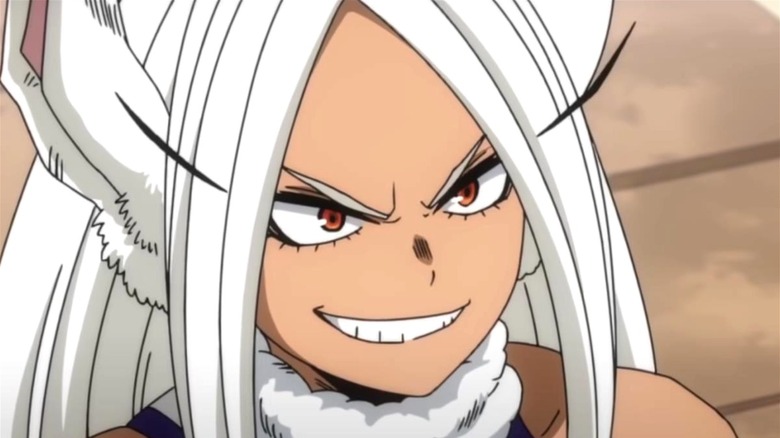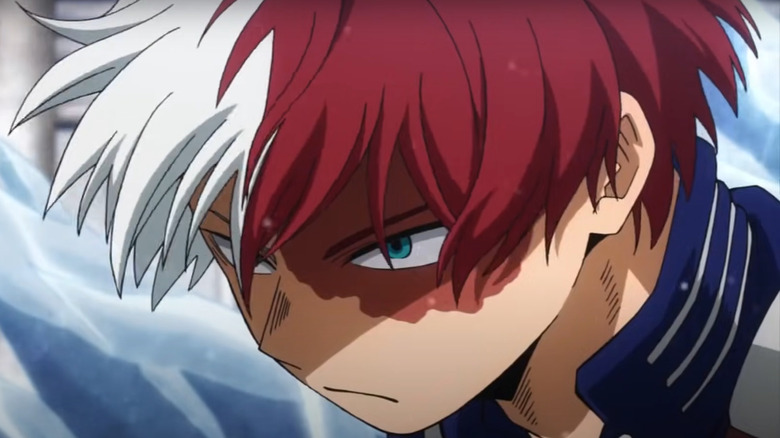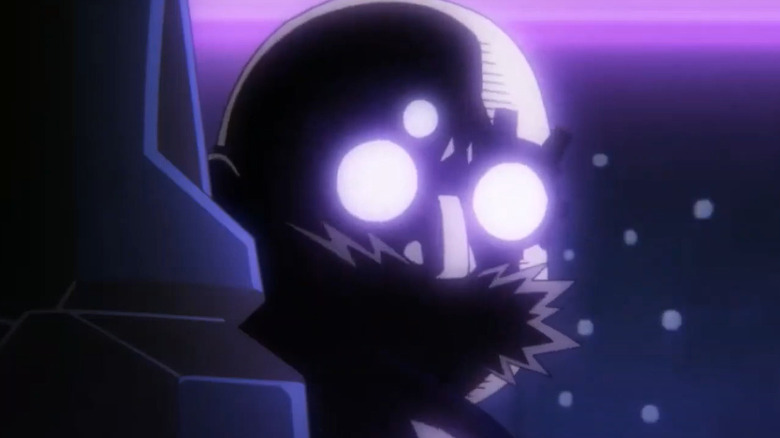The Quirk Singularity Theory In My Hero Academia Explained
Warning: spoilers for Season 5 of "My Hero Academia" ahead.
On the surface, the premise of "My Hero Academia" seems fairly simple. The anime attempts to provide a realistic portrayal of what the real world would be like if the majority of living people had superpowers. So it follows that the main conflict of the series is people who use those powers for good versus who would use those powers for evil. But for the most part, life in the world of "My Hero" appears to be pretty cool, except for the looming shadow of the supervillain One For All, who threatens to take over the world.
But as fans might be aware, there is an insidious secondary threat encroaching on the world of "My Hero," and it's definitely not just a regular old supervillain. An in-universe theory occasionally explored in the series is that of the Quirk Singularity, which suggests that this flashy superhero society may be headed for certain doom.
The Quirk Singularity could be My Hero Academia's doomsday event
To understand what the Quick Singularity is, it is important to have a grasp on how superpowers — or quirks, as they're called in the series — function. Just like a human's specific genetic code, the average metahuman body can hold one specific quirk. Simple enough, but the real wrinkle is how an individual's quirk is determined. In the same way that the two parents of a human child pass half of their genes to their offspring each, so too are the two quirks of metahuman parents often combined into a new single quirk for a metahuman child. The character of Shoto Todoroki is a clear example: his dad's flame quirk and his mom's ice quirk led to him having a half-fire-half-ice quirk.
The way that quirks are passed on is the basis for the Quirk Simulation concept. First explored in-depth in the "My Hero" anime in Season 4, Episode 16, the theory goes that as quirks continue to be passed down to new generations of offspring, they get more complex and powerful. Eventually, the quirks will be so crammed full of different powers that individuals with quirks won't be able to control them and the world will be ravaged, leading to the collapse of society and the possible extinction of metahumans.
How does the Quirk Singularity fit into the main story?
The in-universe theory of the Quirk Singularity was originally presented by Dr. Kyudai Garaki, the mad scientist who fans know as One For All's right-hand man. Though his theory was originally rejected by the scientific community, Garaki found an ally in One For All. The supervillain, having borne witness to the entire history of metahuman society, believed that Garaki's theory could be true. If so, the singularity could pose a real threat to All For One, who would need to ensure his body could adapt to possess the new, powered-up quirks. Thus, Garaki continued his research in the servitude of One For All.
There are some scattered points in the series that suggest Garaki may be onto something. When Katsuki Bakugo and Todoroki are training for their hero licenses, they confront the next generation of quirk users. Though the children are only a few years old, they already possess tremendously powerful quirks. Furthermore, as seen during the "Metahuman Liberation Army" arc, characters like Himiko Toga and Tomura Shigaraki evolved their quirks during battle to become more powerful. There's no denying it — quirks do seem to be getting stronger as time goes on.
Provided that the series continues to faithfully adapt the manga, the show's upcoming sixth season will explore more ideas that connect to the Quirk Singularity. But only time will tell whether Garaki's apocalyptic visions will really spell the end of the universe of "My Hero Academia."


